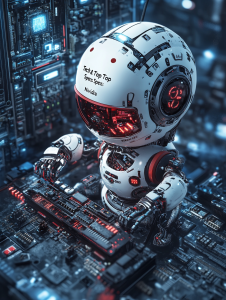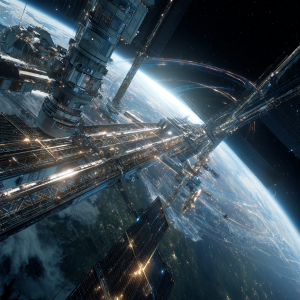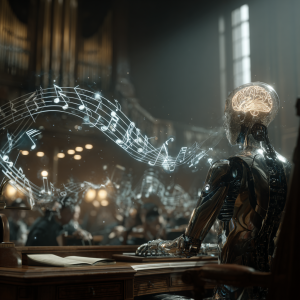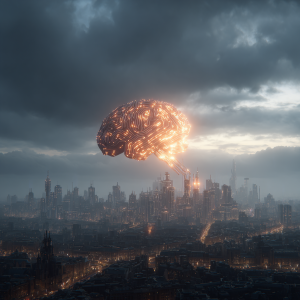They started with gaming graphics and ended up powering the entire AI revolution. Meet Nvidia, the chip-making giant behind everything from ChatGPT to self-driving cars. If OpenAI is the brain, Nvidia is the muscle (in a very expensive, high-performance silicon suit). In this post, we dive into how this GPU godfather quietly took over the AI world.
Discover why every major AI lab is obsessed with their hardware—and how a company that once catered to gamers became the unsung hero of artificial intelligence. Spoiler: it’s not just about speed, it’s about strategy.
When Your Graphics Card Becomes a Brain Surgeon
Once upon a time, Nvidia was the cool kid building graphics cards for gamers who wanted their explosions to look really pretty in Call of Duty. But somewhere along the way, this California-born company went from pixel-pusher to full-blown AI powerhouse—think less Fortnite, more future of humanity.
Founded in 1993 by Jensen Huang, Chris Malachowsky, and Curtis Priem, Nvidia started with a simple goal: bring high-quality 3D graphics to PCs. Fast forward to today, and Nvidia is the critical infrastructure behind AI training. Their GPUs (graphics processing units) are like steroids for machine learning—they crunch data faster than you can say “deep neural network.”
And let’s not forget the money. Nvidia is rolling in it. As of 2024, their market cap soared above $2 trillion—yes, with a “T.” That makes them one of the most valuable companies on Earth, somewhere between Apple and a Scrooge McDuck dream.
Oh, and that stylish leather jacket guy you keep seeing on stage? That’s Jensen Huang—co-founder, CEO, and living proof that you can be both a tech mogul and look like you stepped out of The Matrix.
What Nvidia Actually Does (Spoiler: It’s Not Just for Gamers Anymore)
Nvidia’s secret weapon is the GPU—a tiny yet mighty chip designed to handle thousands of operations in parallel. Originally built for rendering 3D graphics, GPUs turned out to be weirdly perfect for training AI models. Turns out, teaching a neural network is a lot like creating a digital explosion: a lot of math, all at once.
Key Products and Platforms:
- Nvidia CUDA: A parallel computing platform and API that lets developers use GPUs for general-purpose processing. It’s the secret sauce behind their success in AI.
- Nvidia A100 & H100 Chips: These are the Ferraris of AI computing. Every major AI lab—from OpenAI to Meta—is drooling over these chips to train their latest large language models.
- DGX Systems: Think of these as plug-and-play AI supercomputers. You buy one, and boom—you’re a baby AI lab.
- Nvidia Omniverse: A platform for simulating and collaborating in 3D virtual worlds. Meta’s Metaverse might be floundering, but Nvidia’s version is quietly getting things done.
- Nvidia Drive: Their autonomous driving platform. Because why not also build the brains of self-driving cars?
Nvidia has managed to insert itself into every stage of the AI pipeline—from training massive models to deploying them efficiently. If OpenAI is the artist, Nvidia is the paint, canvas, and sometimes even the art gallery.
Why Nvidia is So Damn Good at This: Competitive Edge, Baby
So why is everyone—from Google to your local university research lab—obsessed with Nvidia? It’s not just because their chips are fast (though, yes, they are faster than a caffeinated intern during finals week).
1. They Spotted the AI Wave Early
While other chipmakers were busy playing catch-up, Nvidia saw the AI tsunami coming and started building boats. Back in 2006, they launched CUDA, giving researchers a way to harness GPUs for general computation. That move aged like fine wine.
2. Strategic Partnerships
They’ve got deals with everyone. Microsoft Azure, AWS, Google Cloud, Meta, Tesla—you name it, they’re in bed with Nvidia. It’s like the company went on a global charm offensive… and it worked.
3. Full-Stack Vision
Nvidia isn’t just a chipmaker—they’ve created an entire AI ecosystem. From software libraries to full supercomputing platforms, they make it ridiculously easy to train and deploy AI models at scale.
4. Supply Chain Mastery
While others suffered during the chip shortage crisis of 2020–2022, Nvidia kept delivering. They’ve mastered chip logistics like it’s a strategy game—and they always win.
Real-World Impact: Nvidia Is Everywhere
You know that ChatGPT session you just had? Probably trained on Nvidia chips.
That Tesla autopilot trying not to crash into your recycling bin? Yep, Nvidia inside.
Medical imaging? High-frequency trading? Climate simulations? All running on green-labeled hardware from Santa Clara.
Even scientific breakthroughs—like protein folding via DeepMind’s AlphaFold—relied on Nvidia GPUs. It’s like the Kevin Bacon of AI: no matter where you look, Nvidia is only six degrees away.
Final Thoughts

Nvidia didn’t set out to conquer artificial intelligence—they just wanted your video games to look epic. But thanks to smart strategy, wild innovation, and some lucky timing, they’ve become the beating heart of the AI revolution.
As more companies chase AGI and edge AI explodes, Nvidia stands to gain even more power. Their chips are what dreams (and sometimes nightmares) are made of. Whether you’re training a model, running simulations, or just trying to build the next big AI unicorn, chances are you’re riding on Nvidia’s silicon shoulders.
So next time your chatbot answers like a genius or your car parks itself—give a little mental high-five to Jensen and his merry band of GPU wizards.
Stay curious, stay informed, and let´s keep exploring the fascinating world of AI together.
This post was written with the help of different AI tools.




